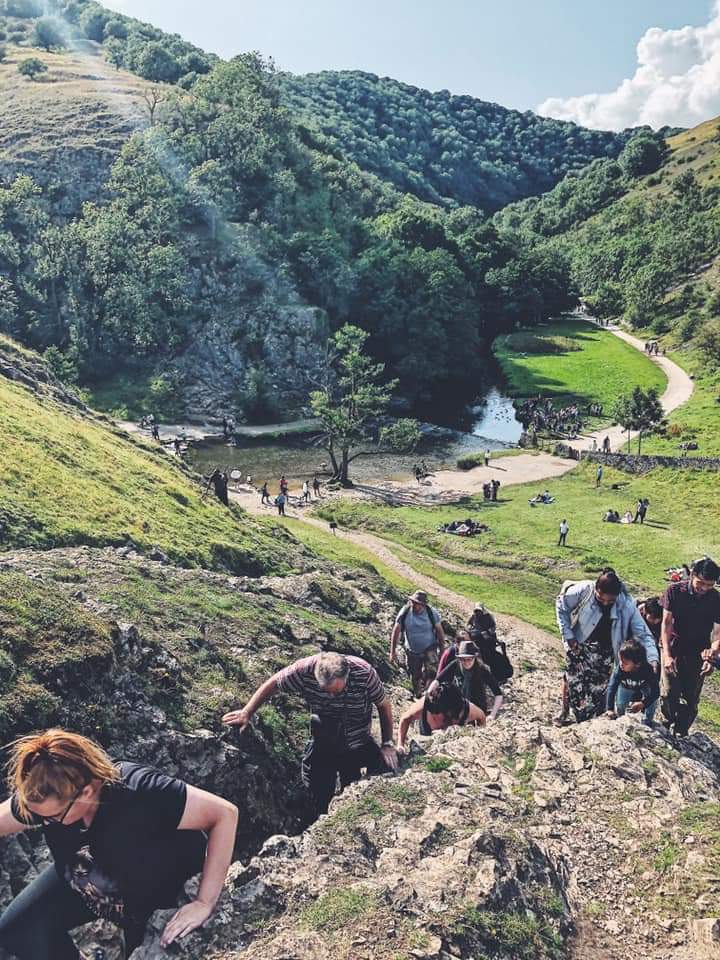
Mountaintop and Valley
At the end of Dr Martin Luther King’s last speech “I’ve Been to the Mountaintop” he leaves us with this wonderful imagery:
“I just want to do God’s will. And He’s allowed me to go up to the mountain. And I’ve looked over. And I’ve seen the Promised Land. I may not get there with you. But I want you to know tonight, that we, as a people, will get to the Promised Land. So I’m happy, tonight. I’m not worried about anything. I’m not fearing any man. Mine eyes have seen the glory of the coming of the Lord.” King is invoking the spirit of Moses who leads the people of Israel to life in a Promised Land. It was 2 years earlier that Dr King had famously outlined a vision for a ‘promised land’ in one of the most iconic speeches of all time. His ‘I have a dream’ speech outlined an America where all people are equal, all are judged by their character and not by the colour of their skin, and where all can sit together at the table of brotherhood. In the speech King again uses the imagery of mountains, adding valleys, rough places and crooked places:
“I have a dream that one day every valley shall be exalted, every hill and mountain shall be made low, the rough places will be made plain, and the crooked places will be made straight, and the glory of the Lord shall be revealed, and all flesh shall see it together.”
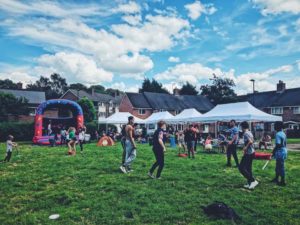 Whenever I see or read this it draws me to our neighbourhood. This imagery speaks loudly to me about our ABCD journey, and the emerging vision of where this journey is possibly taking us to. One of my favourite places to take a walk in our neighbourhood is Comet Park because it gives you this view (insert picture), the closest to a mountaintop view we have. When I go there, I often stop for a moment to reflect on our community. I ponder mine and my neighbours hopes, dreams and fears for our neighbourhood.
Whenever I see or read this it draws me to our neighbourhood. This imagery speaks loudly to me about our ABCD journey, and the emerging vision of where this journey is possibly taking us to. One of my favourite places to take a walk in our neighbourhood is Comet Park because it gives you this view (insert picture), the closest to a mountaintop view we have. When I go there, I often stop for a moment to reflect on our community. I ponder mine and my neighbours hopes, dreams and fears for our neighbourhood.
The physical nature of our neighbourhood lends itself to the imagery. One half of our neighbourhood, Bromford, is in the valley of the river Tame, and the other half, the Firs, leads up a hill (locally we call Mount Chipper!) to the physical peak of Hodge Hill. This physicality conjures up feelings of ‘us’ in the valley being the forgotten people, looked down upon by those above in the hills. For many years Firs and Bromford would be referred to by local people as the forgotten estate! As they witness redevelopments and regeneration in areas around us, but never in our neighbourhood. A new housing development in Hodge Hill is described as a ‘sought after’ address with the perfect living environment to provide an enhanced quality of life, nice estate agent speak! But you can contrast that with the Firs and Bromford been labelled by others as a problem estate! Workshy (Named 7th most workshy estate in the country!), anti-social, apathetic, hard to reach, deprived, and a sink estate.
It’s important to recognise that there is a gap (not just the altitude!) between those on the hill and those in the valley. Much of our neighbourhood is within the 5% most deprived in the country (according to the governments indices!). Hodge Hill is by no means affluent by national standards (within the 40% most deprived), but there is still a significant gap. Further up the hill into Castle Bromwich (within the 40% least deprived) is where you see the biggest difference in levels of disadvantage, or possibly a higher level of advantage, richness, affluence, prosperity and privilege. This gap is shown by statistics but is by no means just about data. There is a feeling that living in Hodge Hill and Castle Bromwich means a better life. Moving away is seen is aspirational and a sign of achievement.
But this is only one way of understanding the mountaintop and our valley. ABCD has helped us in Firs and Bromford see our neighbourhood through a different lens, and through this lens we are seeing a valley full of promise, full of gifts, skills and talents, of treasure found, and treasure still buried waiting to be unearthed, with a definition of richness not purely defined by the marketplace or a government statistic. We are also beginning to see a promised land. Let us take you into our valley and share the treasure that has been unearthed, the community that is evolving and the lessons we have learned along the way.
The Valley
Over the past 10 years we have embarked on a journey to build community with our neighbours. Early in the journey we encountered Cormac Russell who introduced us to the ABCD way of thinking. What was significant was that Cormac didn’t introduce us to anything unfamiliar and didn’t necessarily tell us anything we didn’t already have a gut feeling about. As a youth worker I believe all young people have skills, gifts and talent and my role was to help unearth this, and never (although funding paid us too!) was about engaging with young people because of their problems, or issues, or anti-social behaviour or to fix them! We also had a passion for this place and belief in the potential of community and neighbourhood. What Cormac did introduce was a language to help us interpret what was happening, a range of tools for reflection, a framework for learning, a lens to help us view our neighbourhood, and a bunch of like-minded travellers for our journey. But above all that what was most significant was what it opened my eyes to, or maybe a better description is it focused my vision on what should be important. We had some stories beginning to emerge of local people using their gifts, skills and passion to begin to build community and do fantastic things together. I remember thinking ‘what do we need to do more of?’, and probably most importantly ‘what do we need to stop doing so we can get alongside and encourage more of this to happen?’. So ABCD resonated with our heart and our gut, but it was our heads that needed challenging with some of our planning and thinking, and our hands what we are doing.
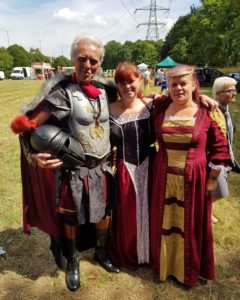 Our ABCD journey has unearthed 4 key elements, ingredients, and dimensions which weave together to enable us to build community with our neighbours, these are:
Our ABCD journey has unearthed 4 key elements, ingredients, and dimensions which weave together to enable us to build community with our neighbours, these are:
- Connecting people, hospitality, and giving an opportunity to show up
One of the first steps was recognising that giving people an opportunity to show up, connecting people, and hospitality are three of the most crucial ingredients in our community building. One of the early activities Hodge Hill Church established was a drop-in space called Open Door, which for many of those involved was intended to tackle job-seeking, debt, and housing, but with a recognition that this started with an offering of a cup of tea. And what emerged was the importance of the cup of tea! It has become a regular space in our community for people to connect, to have someone who will listen and be attentive to them, to get to know what is going on in the community and find out ways to contribute, and most significantly form friendships and bonds. A community lunch was added which gave us the opportunity to regularly sit and eat together. For us sitting and breaking bread together and welcoming a stranger at the table has become a significant sign of our flourishing community. We have witnessed more of these spaces opening up led by local people wanting to provide a place of welcome, a place for community, and for hospitality. None of these spaces is a place specifically set-up to tackle an ‘issue’ e.g. for the lonely, the hungry (I could go on!). All are welcome, all have gifts, skills, and passions to offer, and all can contribute to these places. They are a key part of our valley and the community life that is growing.
Our street connecting and street parties have become an embodiment of connecting and hospitality, and giving people an opportunity to show up. They have been significant in Bringing community to the doorstep of our neighbours. 3 years ago we started Street Connecting, which is our way of intentionally looking to unearth the connectors in our community. We bring connectors together as a team, undertake regular door-knocking in our community to get to know more of our neighbours, and host street parties. What street parties are doing is utilising the environmental assets of our community (we have lots of small pieces of green space mostly unused), using the gifts and skills of the connectors to be hosts of the events (What ‘hosts’ can teach us about how to be a community), and providing an opportunity for our neighbours to show up and be present with each other. For some these have become spaces where neighbours have had their first significant encounter with each other and for others it’s a space for them to bring their friendships and connections, and open them up for others to join in.
- Finding out ‘what are you passionate about?’
In our journey we have learned that finding out ‘what are you passionate about?’ is a life giving experience for many people and for our community (keeping the Martin Luther King references going they are the ‘I have a dream’ conversations!). One of the most significant steps on our journey to discover this was Hodge Hill Church hosting an unsung heroes event. The event encouraged local people to nominate those who they felt made a significant impact in our neighbourhood. The event uneathered literally hundreds of people quietly getting on with really valuable acts in our community. As the awards evening it was the first time this specific question was asked ‘if you had the support of one or two of your neighbours, what would you love to make happen?’ This intentional conversation sparked Phil, who had a dream and the passion to set-up a local theatre group to put on performances in the community. The Bromford Theatre group is now one of the pillars of our community and has helped establish three of the now traditions of our community; the Christmas pantomime, the street nativity, and street passion play. The group also helps make happen many of the other traditions that play a huge role in the calendar of our year; The big summer festival, Christmas event, and our big lunch village green fete. These are all those moments where we come together as one community in the valley. Most significantly the theatre group has become a place for associational life. It gathers more and more people every year who come together to put on performances. But more deeply they are finding friendship, care, somewhere to laugh, somewhere to sometimes cry, somewhere to belong and be real, a place to be nurtured and encouraged, and a place to dress up and as Phil says ‘show off!’. Showing off maybe not always something described as a positive, but in our neighbourhood giving people this opportunity and building people’s confidence to show off their skills and talent is life changing.
What we have learned is that actually asking directly about passions can be off putting. Phil is unique and one of a kind, but for many people it’s a question that is alien, so rarely asked, and requires a level of self-awareness and confidence to answer. So we have learned lots of different ways of asking ‘what are you passionate about?’ shaped by the good life questions and through developing our own ways of having conversation to seek out ‘what gives you life’. What we have found is offering people an opportunity to ‘show up’ often is the first step. This gives positive experiences of community life, meeting people to share with, and people who will help when a passion, idea, gift or skill is unearthed and ready to be shared.
- Barriers need removing
We never want to describe or define our neighbourhood by what we haven’t got, or are lacking, or by the issues we face. We also firmly stand against this, guard ourselves and others from this, and challenge those who wish to do so! We do though recognise that individuals and as a neighbourhood we face challenges, and significantly we have begun to understand and encourage that we face these together as a community. We describe this as barriers that need removing. These are barriers that reduce the opportunity for individuals to flourish and get in the way of people fully contributing to community life. These are also barriers that sometimes need specific support to help people overcome. We have people coming to our door or being connected with us that are suffering sever housing issues, problems with universal credit, PIP assessments, struggling with addictions, mental health, debt, people who need an urgent food package, are dealing with trauma, anxiety, depression, low self-esteem, lacking confidence and are feeling lonely and isolated.
Firstly our response is a community response, looking at what we can do for ourselves. As a community we are seeking to help people build relationships, friendships, and bonds so they have people in their neighbourhood they can turn to for help. We seek to ‘hold’ spaces where people can access support, and that support firstly is from within our community. For example at Open Door there is a team of people ready to help with the most difficult challenges. There is access to the internet for job searching, there is a phone available to call the benefits office, or housing, and their is support to help navigate universal credit, there is a bunch of people willing to say hello, make you a cuppa, help you with that job search (because they are also having to do it) or writing a CV. People offer to take you to an activity and much more. We hope that anybody who walks into the hub with an issue they want help with will walk out knowing there is a community wanting to know them, wanting them to share their skills, and wanting them to become involved.
Secondly we seek to do this in the ‘by’ or ‘with’ space helping people to find and use the tools they require to overcome a barrier. But sometimes this requires doing things ‘for’ people because the circumstances they are facing are so encumbering they need someone to take some of the burden. But what’s crucial is being aware of what we are doing, ensuring we have the consent of everyone involved, and always seeking opportunities to move out of this space.
And Lastly, there are gifts and skills in abundance within everybody in our community. Even in the depths of a crisis there is an opportunity to use a passion for cooking to make something for the upcoming street party, or use a passion for being helpful to clear the tables at the Real Junk Food cafe, or make everyone a cuppa at community lunch. It’s important that there is no them and us, there is not the ‘broken’ and the ‘fixers’, the ‘servers’ and the ‘served’, the ‘client’ and the ‘expert’ (I’m screaming just typing these words!). There is just a community, one that helps those when they are at their most distraught because we want all to flourish and all to be able to contribute their gifts, skills and passion.
- Sharing stories and creating a new narrative
Our first encounter with ABCD thinking was an offer to tell a story of when 2 or more of our neighbours have come together to do something to improve our neighbourhood. Sharing that story opened so much opportunity for more story telling. For us a crucial dimension has been creating opportunities for us to share stories amongst ourselves. In the last few years we have created intentional spaces where we have come together to share food and stories with each other, and crucially share stories about each other. This has created times to affirm one another, to say thank you for what someone else does and how they make you feel and helped us understand what we value the most. During these times I love to listen and resist the desire to speak myself. Partly because I feel I have enough opportunities to speak at other times, but mostly because I love to observe. There are people who will always speak up and share a story which is really important to get the gathering going, but what I have loved to witness is the people who begin on the edges, sometimes outside the room scared to come in, but slowly (and I mean by attending 3 or 4 gatherings, not in one night!) they begin to join the circle, respond maybe to answer a question, and then eventually share a story themselves. This is transformative for this person gaining the confidence and the voice to share, but as important it’s about us as a community hearing that voice, having a space to grow the number of voices, and mostly being affirmed by what is said, but sometimes being challenged by hearing this new voice! This has helped us gain the confidence to understand what we can do for ourselves, what we value about each other, and crucially that we need each other to make this work.
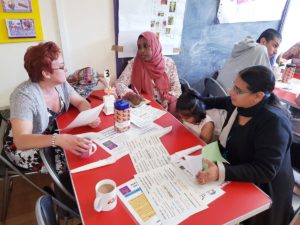 Another crucial dimension is sharing stories with others. One of the markers for me has been how open we have become to ‘strangers’ and ‘visitors’. We have always wanted to invite people to come visit us and experience life in Firs & Bromford. In the early days this felt at times uncomfortable, people felt like they were being observed, felt dubious of people’s motives, and felt like they had little to share. It was usually the youth worker, the vicar or the community worker who told the stories about others, not people sharing about themselves. But now we embrace visitors because people love that others want to come and hear about what we are doing. We had a visitor recently who came for 2 nights. When he arrived I introduced him to someone. 2 days later at an event you would have thought he was part of the community, and for those 2 days he was treated like one of us, not a stranger.
Another crucial dimension is sharing stories with others. One of the markers for me has been how open we have become to ‘strangers’ and ‘visitors’. We have always wanted to invite people to come visit us and experience life in Firs & Bromford. In the early days this felt at times uncomfortable, people felt like they were being observed, felt dubious of people’s motives, and felt like they had little to share. It was usually the youth worker, the vicar or the community worker who told the stories about others, not people sharing about themselves. But now we embrace visitors because people love that others want to come and hear about what we are doing. We had a visitor recently who came for 2 nights. When he arrived I introduced him to someone. 2 days later at an event you would have thought he was part of the community, and for those 2 days he was treated like one of us, not a stranger.
What I have witnessed through this story telling is a changing of the narrative. When I arrived a lot of people described a forgotten neighbourhood, a place people felt love for but generally if they had the chance they would move out. What I am now hearing more and more is a belief that there is something special about this place, a feeling of community, togetherness, unity, and a feeling of hope. Hope that comes from experiencing together we can achieve so much and have a good life here. When we go door knocking, we do still hear versions of the older narrative which keeps us grounded knowing that not everyone is connected and experiencing this good life. But overwhelmingly we are hearing more and more people saying they no longer wish to leave, some who did leave have come back, and a belief that in Firs and Bromford we can flourish.
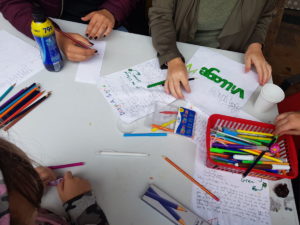 The Promised Land – the view from the mountaintop
The Promised Land – the view from the mountaintop
All of this is enabling us to understand the view from the mountaintop of a promised land. Much of this is beginning to be drawn together as a ‘Village Vision’ for Firs and Bromford. This is at a very early stage and we feel there is lots more listening in the valley to be done. Within this vision there are some physical changes to our neighbourhood, new houses, a flood defence scheme, proposed heritage centre, wellbeing walk and further development of our assets. Some done for us, some with help from others, and some led by ourselves. All very welcome!
Most crucially our challenge is that the village vision sets-out how we together can further nurture an environment where there is more connecting, more hospitality, more chances for people to show up, more unearthing of what people are passionate about, more sharing of gifts, skills and passions, more barriers being removed, and more stories being shared to create a new narrative for our neighbourhood.
Let me take you back to the view from Comet Park. Sometimes when I go there I have a small feeling similar to Martin Luther. The person of faith in me feels like ‘mine eyes have seen the glory of the coming of the Lord’, and I feel like I’ve seen and witnessed a Promised Land. I know we haven’t got there, but I truly feel as a community we will get to our Promised Land.

Noel oluigbo
The need to focus on the most important things is the key. Like the book “The Power of Positive Thinking” see the positives rather than the negatives is what ABCD is all about.